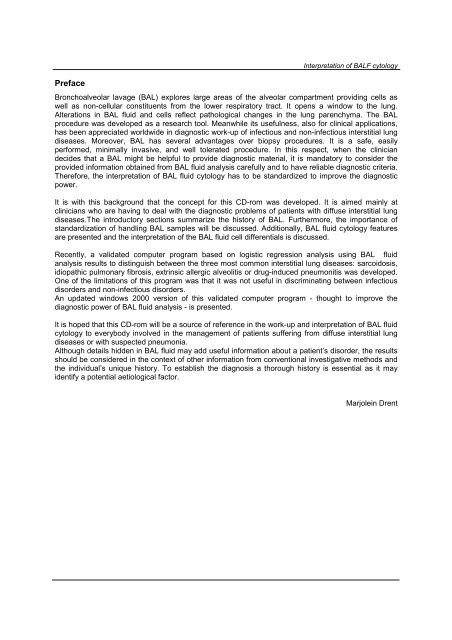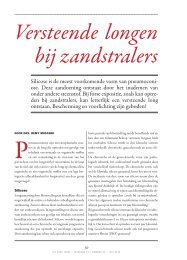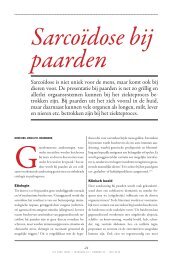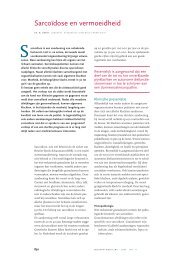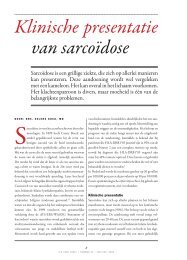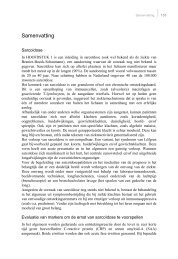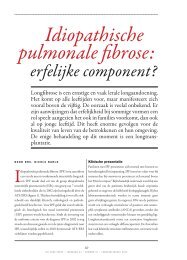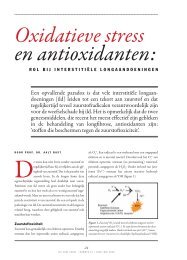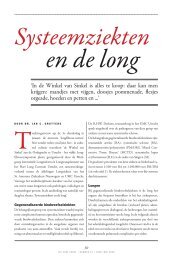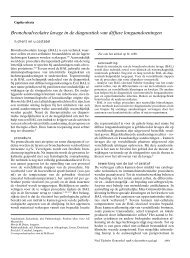Interpretation of bronchoalveolar lavage fluid cytology - ILD care
Interpretation of bronchoalveolar lavage fluid cytology - ILD care
Interpretation of bronchoalveolar lavage fluid cytology - ILD care
You also want an ePaper? Increase the reach of your titles
YUMPU automatically turns print PDFs into web optimized ePapers that Google loves.
Preface<br />
<strong>Interpretation</strong> <strong>of</strong> BALF <strong>cytology</strong><br />
Bronchoalveolar <strong>lavage</strong> (BAL) explores large areas <strong>of</strong> the alveolar compartment providing cells as<br />
well as non-cellular constituents from the lower respiratory tract. It opens a window to the lung.<br />
Alterations in BAL <strong>fluid</strong> and cells reflect pathological changes in the lung parenchyma. The BAL<br />
procedure was developed as a research tool. Meanwhile its usefulness, also for clinical applications,<br />
has been appreciated worldwide in diagnostic work-up <strong>of</strong> infectious and non-infectious interstitial lung<br />
diseases. Moreover, BAL has several advantages over biopsy procedures. It is a safe, easily<br />
performed, minimally invasive, and well tolerated procedure. In this respect, when the clinician<br />
decides that a BAL might be helpful to provide diagnostic material, it is mandatory to consider the<br />
provided information obtained from BAL <strong>fluid</strong> analysis <strong>care</strong>fully and to have reliable diagnostic criteria.<br />
Therefore, the interpretation <strong>of</strong> BAL <strong>fluid</strong> <strong>cytology</strong> has to be standardized to improve the diagnostic<br />
power.<br />
It is with this background that the concept for this CD-rom was developed. It is aimed mainly at<br />
clinicians who are having to deal with the diagnostic problems <strong>of</strong> patients with diffuse interstitial lung<br />
diseases.The introductory sections summarize the history <strong>of</strong> BAL. Furthermore, the importance <strong>of</strong><br />
standardization <strong>of</strong> handling BAL samples will be discussed. Additionally, BAL <strong>fluid</strong> <strong>cytology</strong> features<br />
are presented and the interpretation <strong>of</strong> the BAL <strong>fluid</strong> cell differentials is discussed.<br />
Recently, a validated computer program based on logistic regression analysis using BAL <strong>fluid</strong><br />
analysis results to distinguish between the three most common interstitial lung diseases: sarcoidosis,<br />
idiopathic pulmonary fibrosis, extrinsic allergic alveolitis or drug-induced pneumonitis was developed.<br />
One <strong>of</strong> the limitations <strong>of</strong> this program was that it was not useful in discriminating between infectious<br />
disorders and non-infectious disorders.<br />
An updated windows 2000 version <strong>of</strong> this validated computer program - thought to improve the<br />
diagnostic power <strong>of</strong> BAL <strong>fluid</strong> analysis - is presented.<br />
It is hoped that this CD-rom will be a source <strong>of</strong> reference in the work-up and interpretation <strong>of</strong> BAL <strong>fluid</strong><br />
<strong>cytology</strong> to everybody involved in the management <strong>of</strong> patients suffering from diffuse interstitial lung<br />
diseases or with suspected pneumonia.<br />
Although details hidden in BAL <strong>fluid</strong> may add useful information about a patient’s disorder, the results<br />
should be considered in the context <strong>of</strong> other information from conventional investigative methods and<br />
the individual’s unique history. To establish the diagnosis a thorough history is essential as it may<br />
identify a potential aetiological factor.<br />
Marjolein Drent


